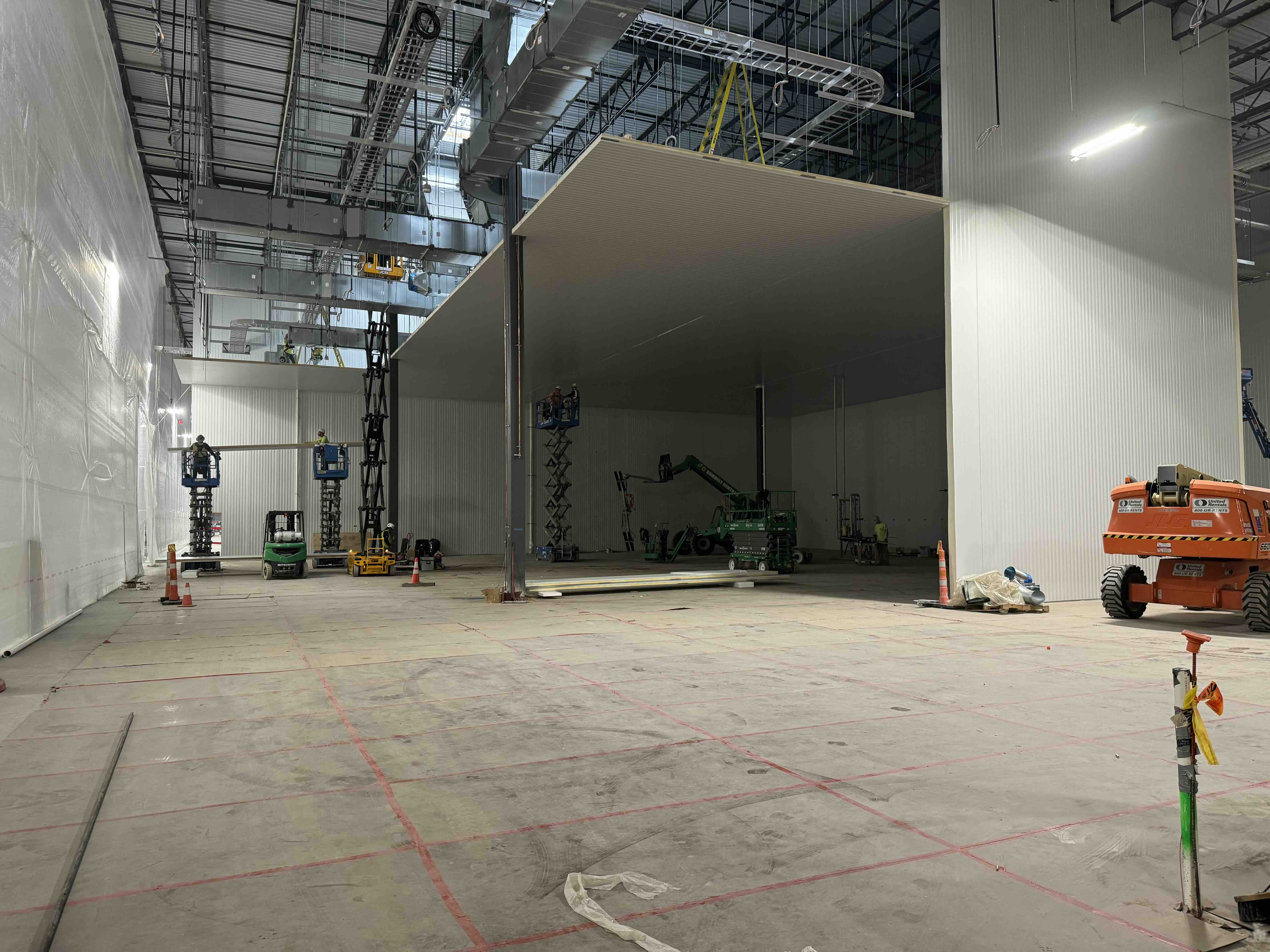Advantages of Controlled Environment Rooms with Insulated Metal Panels
Controlled environment rooms are specialized spaces designed to maintain strict control over temperature, humidity, air quality, and cleanliness. They are critical in industries like pharmaceuticals, food processing, biotech, research, and medical device manufacturing. If not done correctly these rooms could be vulnerable to air infiltration, inconsistent interior temperatures, high energy use, and one of the biggest concerns for building owners condensation and bacteria growth.
The R-value of insulated metal panels (IMPs) measures their thermal resistance, how well they prevent heat transfer. A higher R-value means better insulation and energy efficiency. The R-value of a panel depends primarily on the type and thickness of its core insulation.
Installing a high-quality insulation system that meets today’s standards offers several key benefits:
1. Control Temperature Rooms
Insulation reduces heat transfer in and out of the building, helping HVAC systems maintain a stable indoor climate. This leads to consistent, comfortable temperatures throughout the space year-round. Used for product stability testing, storage, and sensitive procedures.
2. Enhanced Energy Efficiency
By decreasing the workload on heating and cooling systems, insulation significantly lowers energy consumption. This not only reduces utility costs but also supports environmentally conscious building practices.
3. Condensation Control/Air Quality Control
Condensation occurs when warm, humid air contacts cooler surfaces, like framing or unsealed parts of the building envelope. This can lead to metal corrosion and diminished insulation performance.
Insulation helps by minimizing the temperature difference between air and surface, reducing condensation risks. A proper vapor retarder is essential, acting as the first line of defense against moisture intrusion. (We’ll dive deeper into vapor retarders later.)
4. Sound Dampening
Metal buildings often amplify sound and create echoes. Insulation absorbs noise, resulting in a quieter, more comfortable interior especially valuable in recreational facilities or industrial settings with loud equipment.
5. Wash Rooms, Finished Interior
Designed for frequent cleaning and sanitation. Also built with water resistant materials like stainless steel. Which usually, these rooms come with a drainage system in place on the ground for proper airflow to prevent mold and bacteria growth.
Aplications
Pharmaceuticals - Sterile production, compounding, testing laboratories.
Food Processing - Hygiene critical wash down zones, cold storage, packaging.
Biotech Research - Incubation rooms, clean rooms and wash stations.
Medical devices - Assembly in clean zones, sanitation, and storage.
Service Advantages
Vast operability use
Best-in-Class R-Value & Aesthetic Options
Superior Thermal Performance
Design Flexibility & Fast Installation
Vast operability use
Delivers up to 11% better performance than PIR and up to 60% better than PUR cores, with a wide range of textures and finishes to suit any project.

Discover Other Services
Questions That We Are Asked Most Often
What types of commercial buildings do you work with?
How do insulated metal panels benefit my business?
How much can insulated metal panels save on energy costs?
How long does it take to install insulated metal panels?
What is the difference between insulated metal panels and traditional insulation?
What is the average cost of commercial insulation services?
Are your thermal barriers suitable for extreme weather conditions?
Upgrade Your Home Today
Stronger, Safer, & More Efficient!


